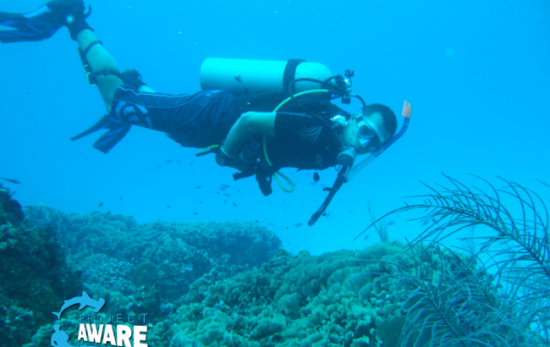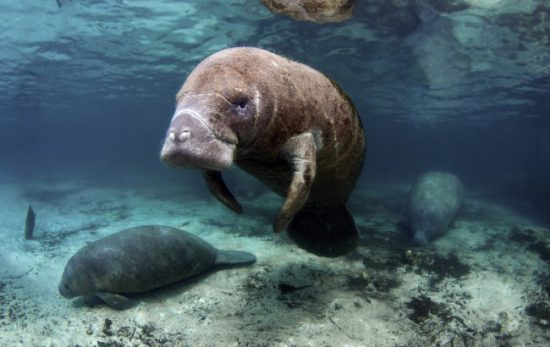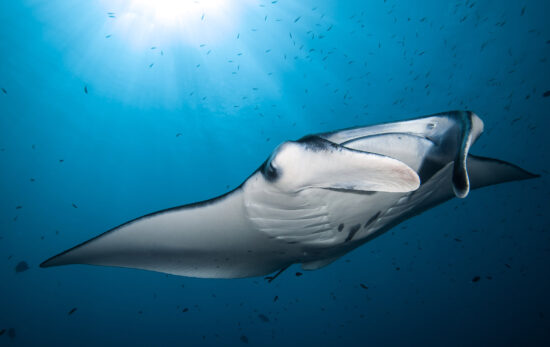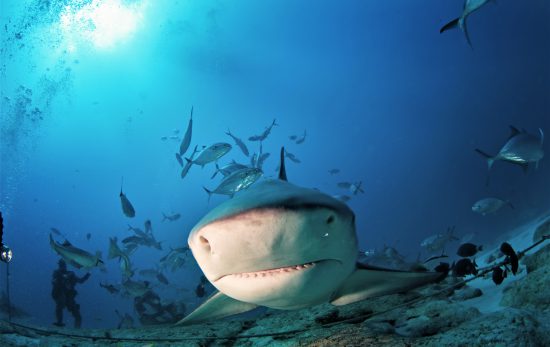Are you adventurous enough to come nose-to-nose with great white sharks — one of the ocean’s ultimate apex predators? Read on to dive into our countdown of the top five great white shark diving locations.
Let’s take your passion for scuba diving to new depths!
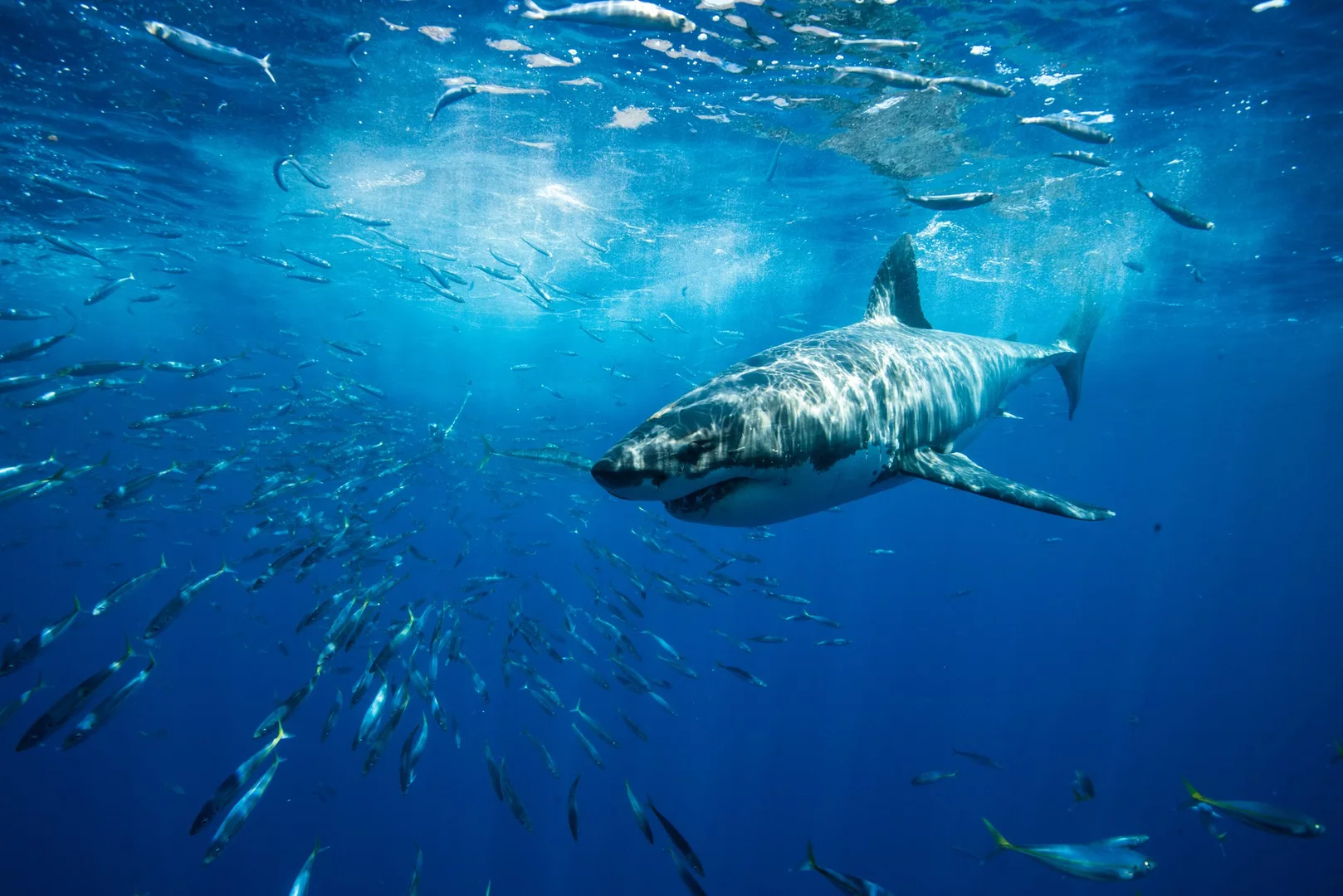
An Introduction to Great White Sharks
Before you find yourself beneath the waves with a massive great white shark or two, it’s worth doing a little homework on these legendary fish.
Great white sharks are some of the most powerful creatures in the world. They certainly demand respect. Remember, when you dive in the ocean, you are on their home turf. That being said, the likelihood of any species of shark attacking a human is extremely low. The odds of dying from a shark encounter are even smaller — with a mere 1 in 4.3 million chance of a shark-related fatality. In fact, you are far more likely to die from a cow, a meteorite, or a lightning strike.
As immense as they are graceful, mature great whites can grow up to 6.4 m (21 ft) in length and weigh over 3,000 kg (7,000 lb). These gigantic fish can live for more than 30 years, with recent research suggesting their lifespan may reach 70 years or even longer!
Great white sharks meander globally and can thrive in both coastal and offshore waters, typically ranging in temperature from 12 to 24°C (53 to 75°F). Greater densities of great whites congregate in fairly specific locations around the world, generally where food sources are plentiful. These hot spots provide the best opportunity to dive with these majestic creatures.
Ready to take the plunge with great white sharks? Here are our top destinations for diving with great white sharks.
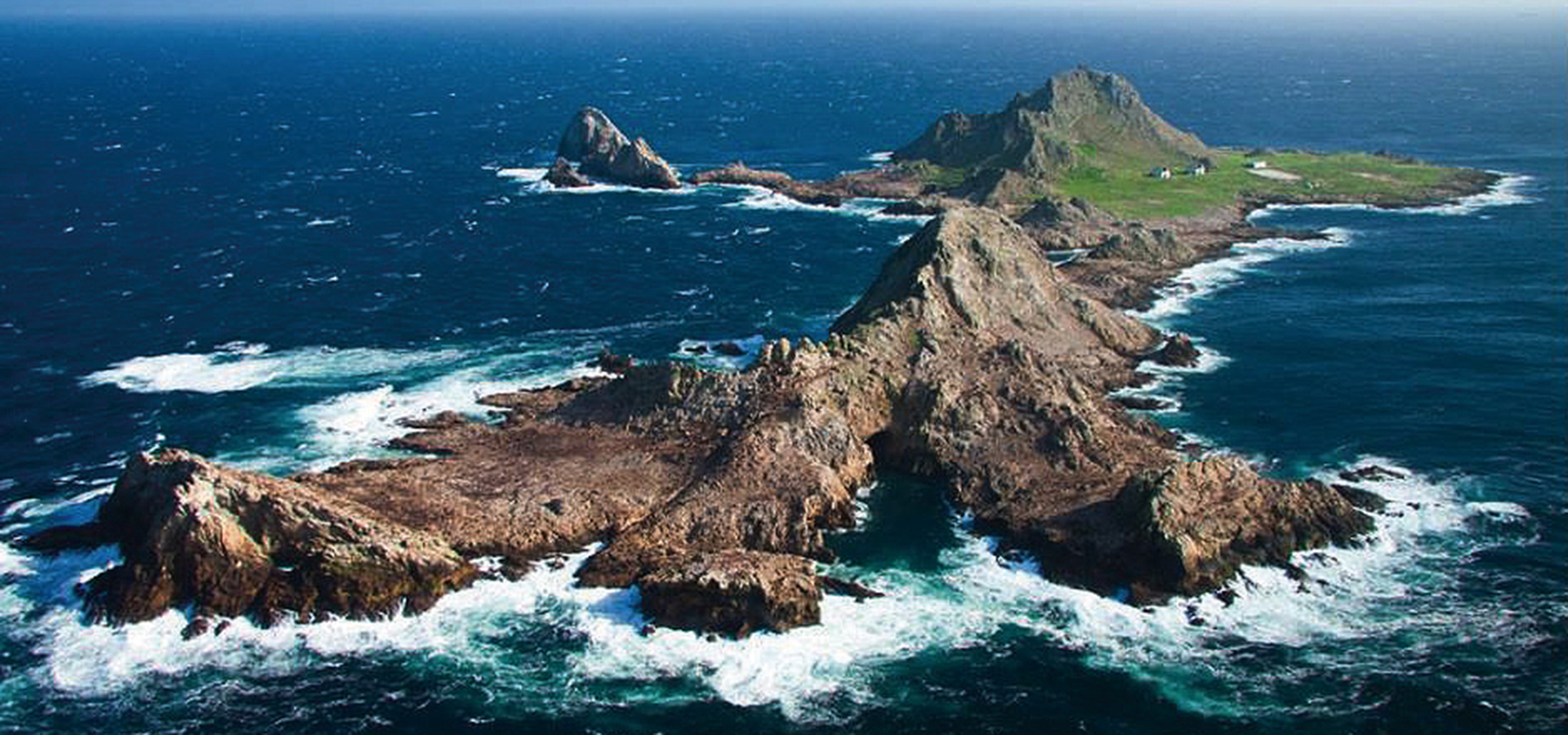
5. Farallon Islands, USA
Only a short boat ride away from San Francisco, the Farallon Islands are the only places in the United States that you can consistently find and dive with great whites. These rocky islands, located 30 miles (48 km) west of the Golden Gate Bridge in California, can be described through numerous superlatives. Remote and rugged, the Farallon National Wildlife Refuge protect an incredible bounty of wildlife.
The sharks congregate here from September through November, but unfortunately the water at this time is cold and murky. We recommend wearing a thick wetsuit, gloves, and a hood. Fortunately, this area does not allow chumming, so you need a knowledgeable captain.
4. Port Lincoln, Australia
Head to Australia to cage dive with the many great whites that lurk around the Neptune Islands. Your boat will leave from Port Lincoln, from which you take a three-hour cruise to this remote, seal-covered spot. Wherever there is an abundance of seals, you will likely find an abundance of sharks. This area is a world-renowned hot spot for the vulnerable white sharks that regularly forage in the area for seals.
The waters around the Neptune Islands are crystal clear, and the sharks are plentiful. Male great whites (up to 5-meters/16-feet in length) inhabit the area year-round. Long-nose fur seal pups are born in summer (December to January), but don’t start entering the ocean until winter (April to August). That’s when the giant female great whites (up to 6-meters/19-feet) arrive in the Neptunes.
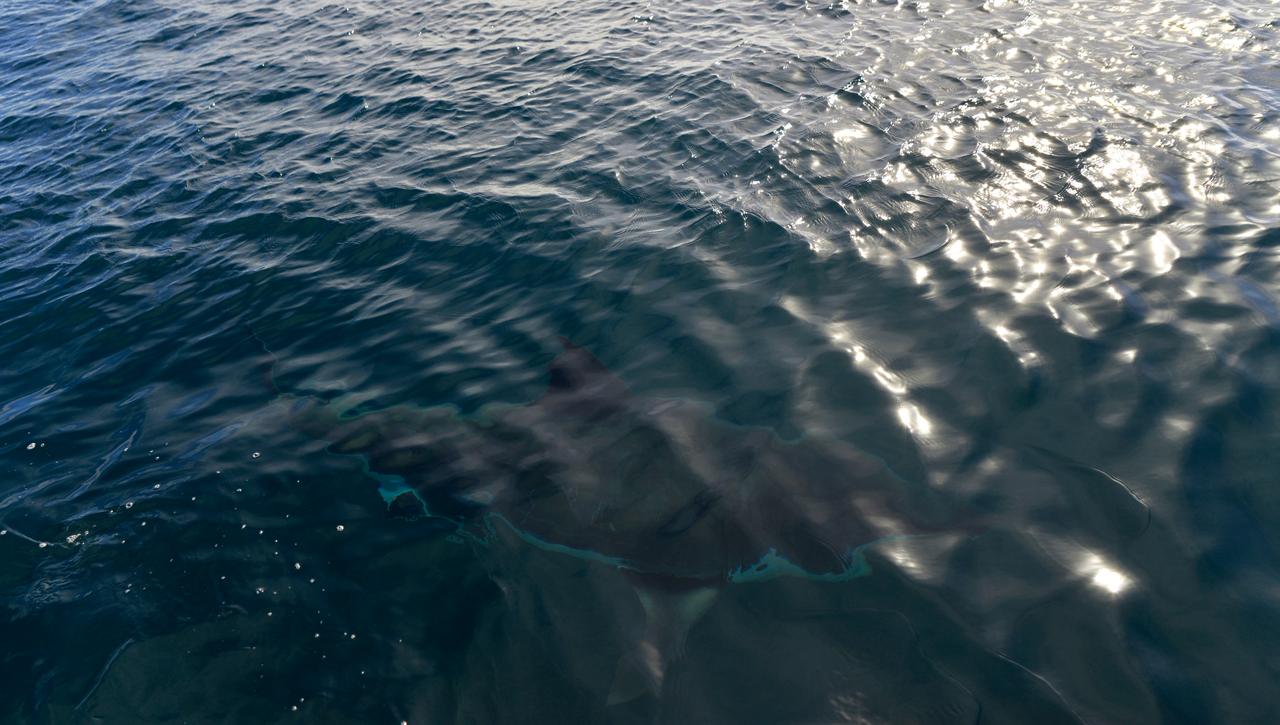
3. Stewart Island, New Zealand
New Zealand may be one of the lesser known spots for getting in the water with great white sharks. However, its lesser fame doesn’t necessarily indicate a lesser likelihood of success. During the right time of year, Stewart Island can offer memorable great white shark encounters.
Great white shark tours in New Zealand leave from Bluff, a small port town located on the southernmost point of the Southern Island. From here, boats head out across the often sea-sickness-inducing Foveaux Strait to the Northern TiTi Islands. The reason it’s worth enduring the crossing? A seal colony lives on an uninhabited island. While some sharks are always present, the great white shark cage diving season in Stewart Island runs between December to June.
Once anchored, guests take turns to enter the cage for an up-close view of any nearby sharks. In addition to great whites, it’s possible to see mako, blue and even sevengill sharks in the life-filled waters of the Foveaux Strait. Water temperatures generally sit between 50 and 57°F (10 and 14°C), and water visibility is usually between 30 and 60 feet (10 and 20m).
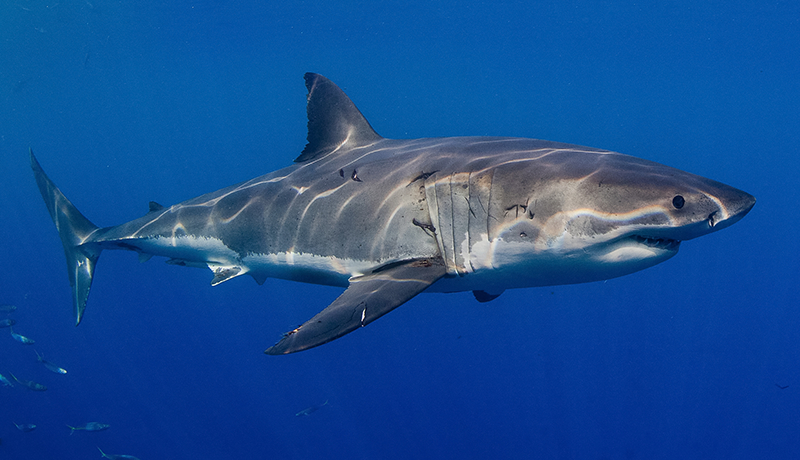
2. False Bay, South Africa
It will come as no surprise that South Africa boasts the top two places to dive with great white sharks. More great whites patrol these waters than anywhere else in the world. False Bay is just off the coast of Cape Town, making it a convenient and impressive place to go on your shark diving adventure.
From this capital city, you’ll head 22 miles (35 km) south to Seal Island. What makes this dive so unique is that you can witness the great whites breaching as they leap to catch their prey. You will spend time beneath the waves with the sharks as they hunt, allowing you to encounter these creatures in their natural environment.
Scuba diving in the Western Cape province of South Africa is possible year-round. Expect cooler temperatures during the winter season (June-August). However, the southern coast is much calmer and more accessible during these cooler months. On the other hand, the Atlantic coast becomes inaccessible during the winter months. As a rule of thumb, the season in which you visit will determine where you dive. Water temperatures average between 55 and 63°F (13 and 17°C).
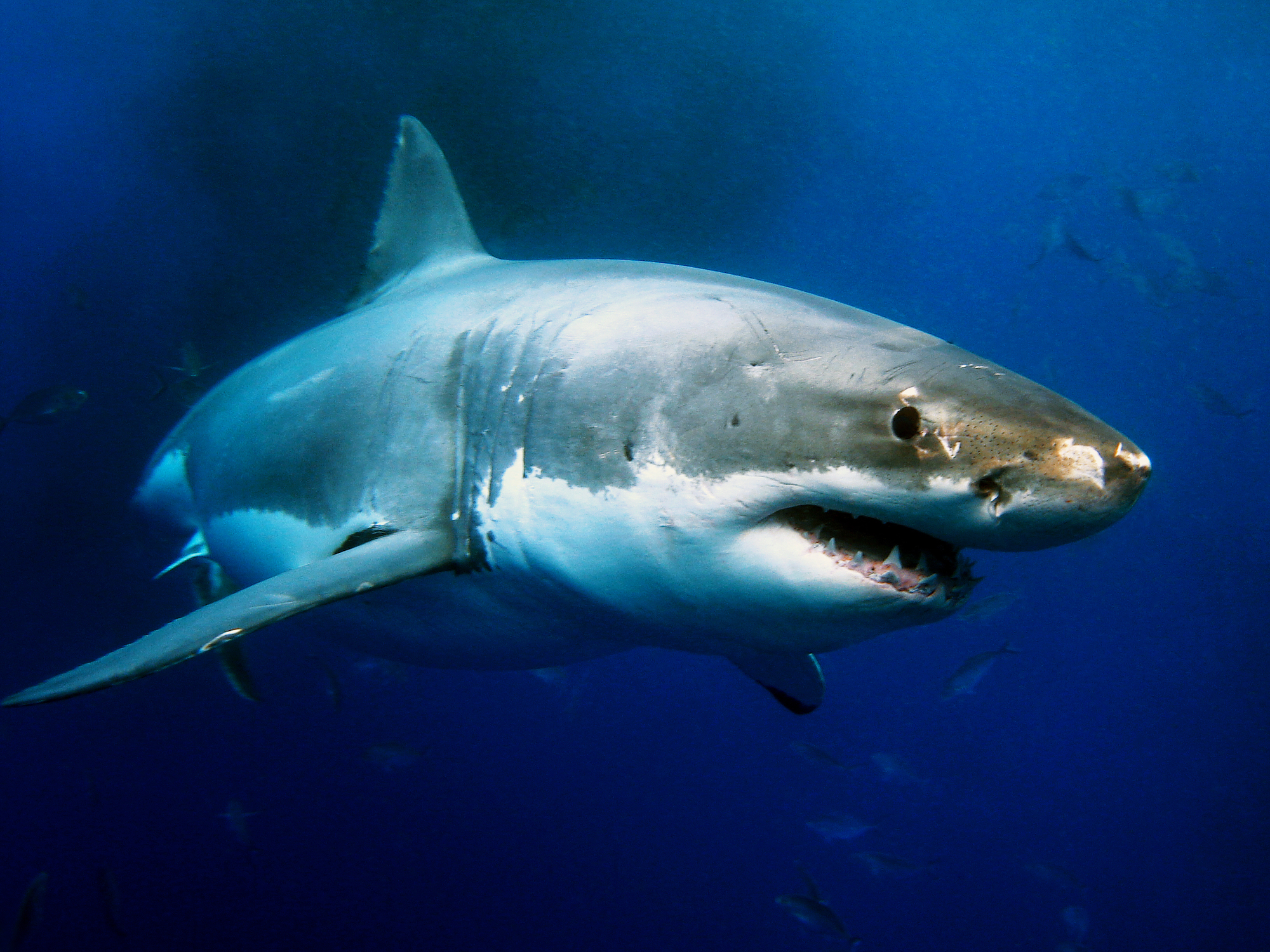
1. Dyer Island, South Africa
The highest concentration of great whites in the world can be found around Dyer Island, only a short ride from Gansbaai. An astounding number of fur seals and penguins make this island their home, so you have a great chance of seeing them on your dive, as well as great whites, of course.
Attracted by the colony of roughly 60,000 seals on Geyser Rock (separated from Dyer Island by the world-famous “Shark Alley”), the apex predators are regularly sighted by thousands of visitors who come to the area to dive each year.
The best months to visit are from May through August, but the water is quite cold year-round. For the ultimate shark diving experience, Dyer Island is not to be missed.
A Note on Guadalupe Island, Mexico — CLOSED TO TOURISM
Previously, Guadalupe Island in the waters off Mexico’s west coast was once one of the best places in the world to get in the water with great white sharks. However, as of January 2023, the government closed the island to tourism, citing the protection of the sharks and their habitat.
Here’s an overview of what Guadalupe Island used to offer:
Found 150 miles (241 km) off the coast of the Baja Peninsula, Guadalupe Island is as beautiful as it is remote. This spine-tingling experience of being in the water with the local great whites was heightened tenfold by the crystal-clear water (with visibility often soaring beyond 100 feet/30 meters). Divers were able to come face-to-face with these huge predators while being protected by a cage, providing a truly up-close view. When it was open, it was estimated that 270 great white sharks visited Guadalupe Island each year. This meant multiple encounters were commonplace.
Voyages out to the island typically lasted around five or six days, offering divers a dose of relaxation and fantastic views throughout. Over the years, the seasonal great whites generally arrived to the island around June, with the best shark diving experiences occurring between July and November.
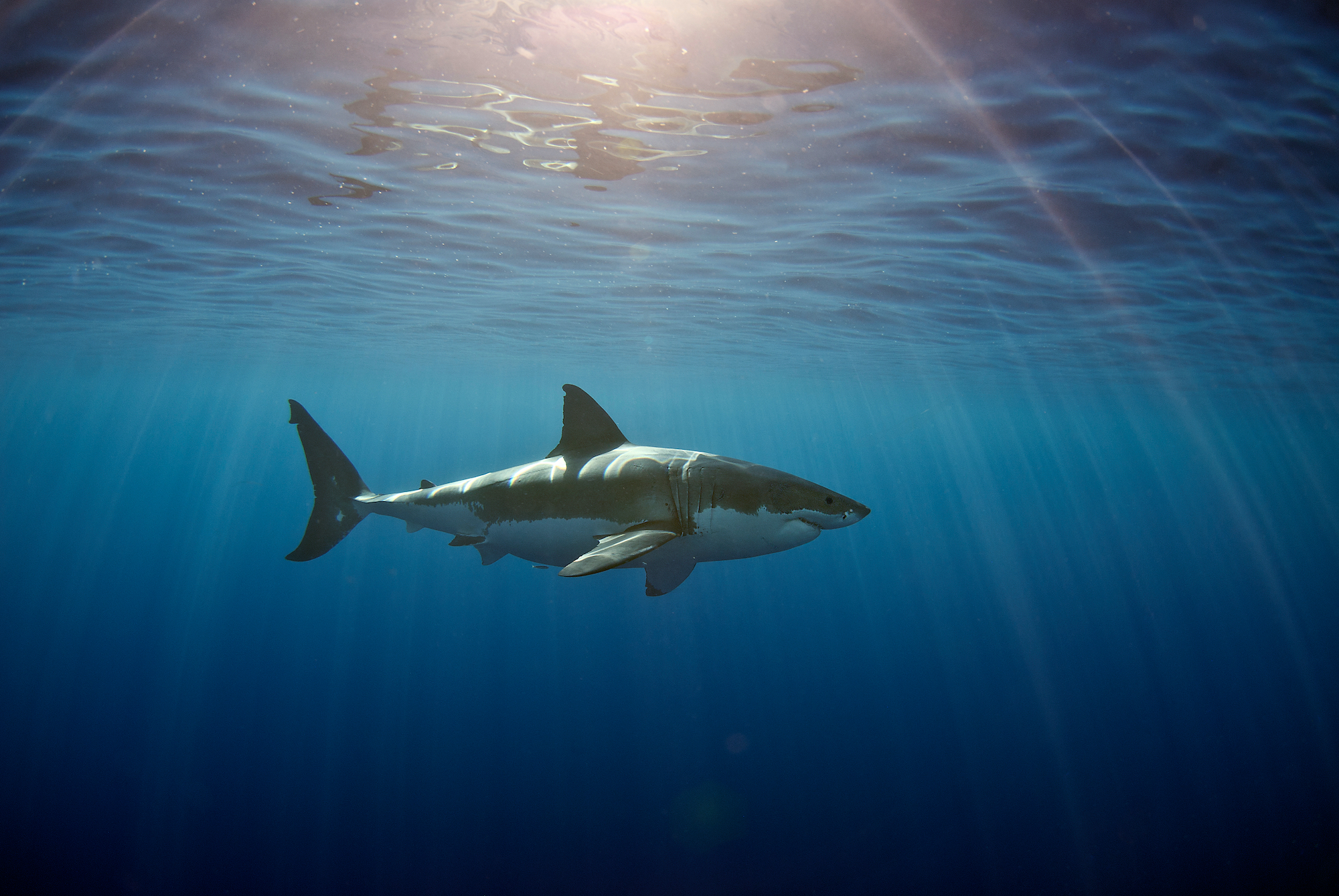
Common Questions About Great White Sharks
Want to learn more about the world’s most famous sharks? Here are the answers to the most commonly asked questions about great whites.
What Do Great White Sharks Eat?
Great white sharks have a varied diet which will often adjust with an individual shark’s size and the age. A great white shark’s diet may include sea birds, sea turtles, mollusks, crustaceans, and a variety of marine mammals (sea lions, dolphins, seals and even some whales). Additionally, great white sharks have also been observed consuming carrion, such as floating dead whales or dolphins.
What Eats Great White Sharks?
As an apex predator, it would be easy to think the great white shark has no predators. However, this is not the case. Orcas (killer whales) have been observed actively hunting great white sharks and have even been seen to affect the shark’s behavior when nearby.
Why Are Great White Sharks Called Great White Sharks?
Great white sharks get their name from their distinctive appearance — specifically their “white” underside. This contrasting appearance, with gray on top and white below, helps the sharks remain hidden when viewed from above. The shark’s “great” comes from their imposing size. Potentially more than 20 feet (6 meters) long and weighing more than 6,600 pounds (3,000 kg), it’s easy to see why.
How Fast Can Great White Sharks Swim?
Thanks to their powerful tails and torpedo-type shape, great white sharks can travel at speeds approaching 35 mph (50 kilometers an hour). These bursts of speed are especially useful during hunting, when great white sharks may strike from below to surprise unsuspecting prey.
Can You Dive With Great White Sharks?
Yes, there are several places across the world where you can dive with great white sharks. The USA, Australia, New Zealand and South Africa are all popular destinations with reputable operators running great white shark experiences.
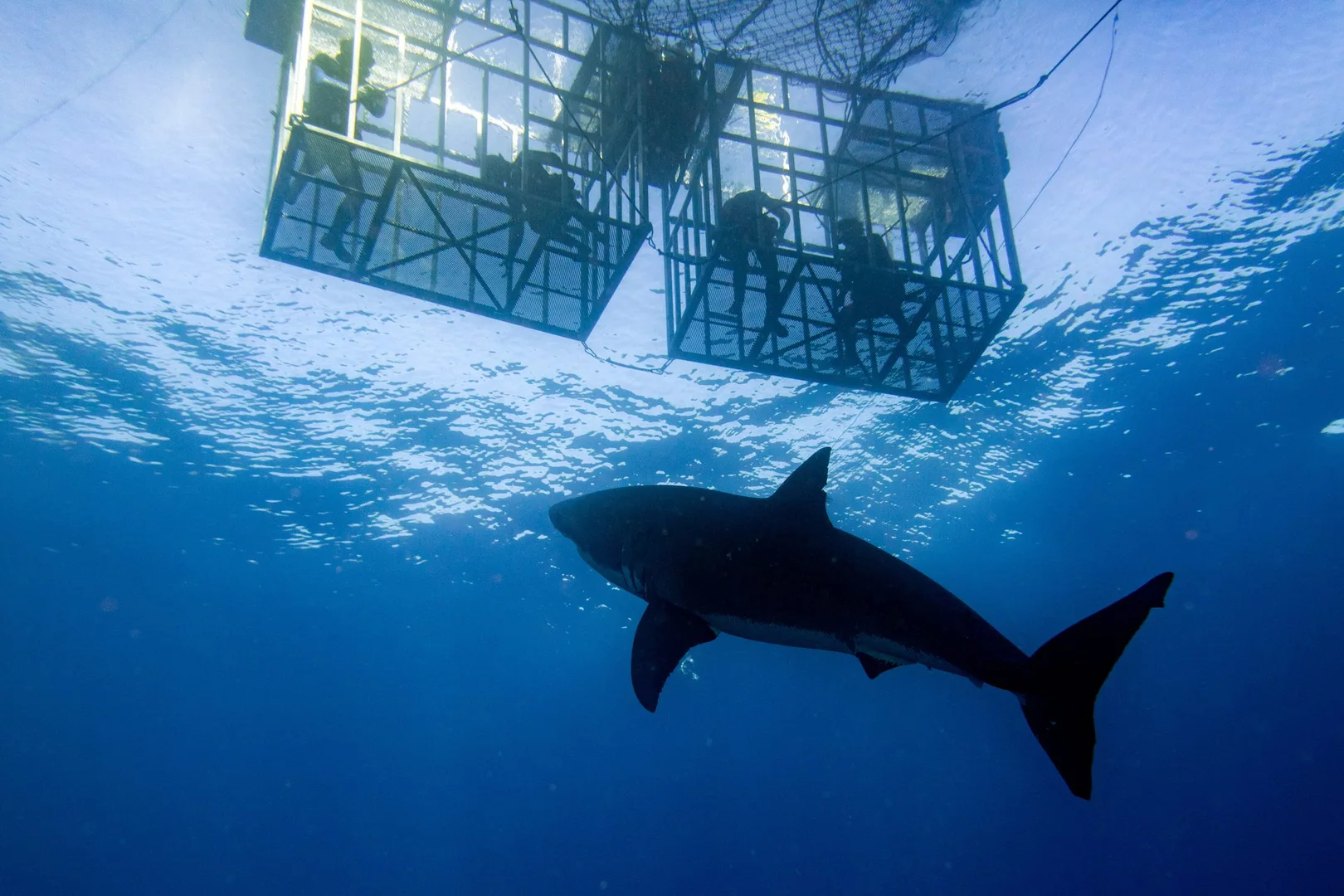
Can You Dive With Great White Sharks Without a Cage?
No, there are no operators offering specific great white shark experiences without a cage. Given their size and strength, being in the water with great whites outside of a cage is considered dangerous. However, it is possible to dive with other shark species without a cage.
Do Great White Sharks Attack Humans?
Yes, great white sharks have been known to attack humans. However, it’s important to maintain perspective. Shark attacks are extremely rare, and shark-attack fatalities even less likely. Humans are also not part of a great white shark’s diet.
Are Great White Sharks Endangered?
Great white sharks are classified as vulnerable by the International Union for Conservation of Nature (IUCN). The great white shark’s current population trend is decreasing, with threats including overfishing and bycatch, habitat degradation and declining prey populations.
Where Do Great White Sharks Live?
Great white sharks are a widespread species usually found in temperate regions in both coastal and offshore waters. They may also travel surprisingly vast distances, often following migratory patterns for seasonal prey or reproduction. Well-known regions with a great white shark presence include Australia and New Zealand, southern Africa, the northeast coast and northwest coast of the USA and Mexico’s Guadalupe Island.
Ready to Share the Water With Great White Sharks?
This is a bucket list item for many divers and non-divers alike, and one you don’t want to miss. Whether you decide to appreciate these sharks from above or choose to go face-to-face with them, don’t miss your chance to meet these legendary marine predators in their natural habitat.
